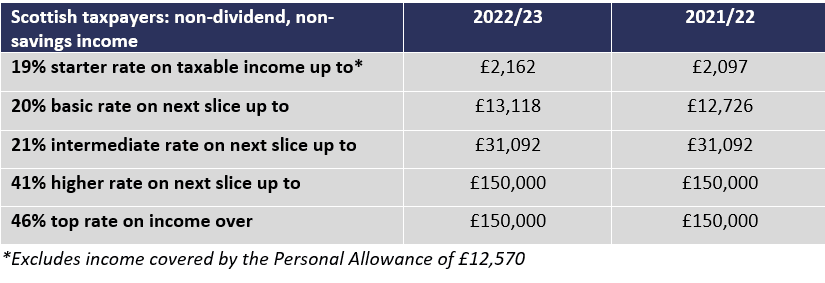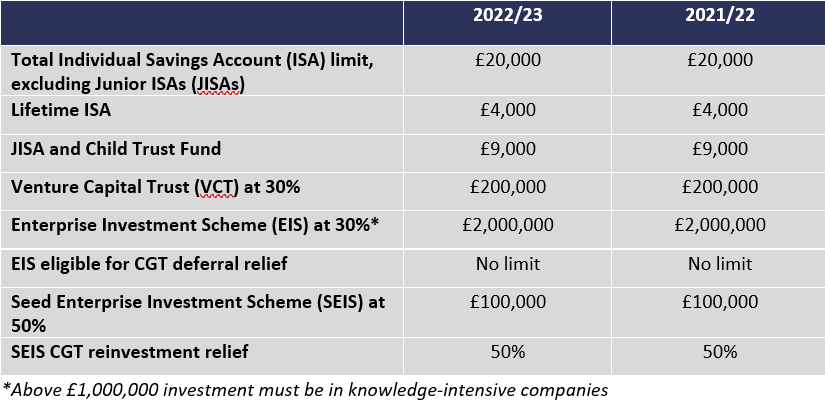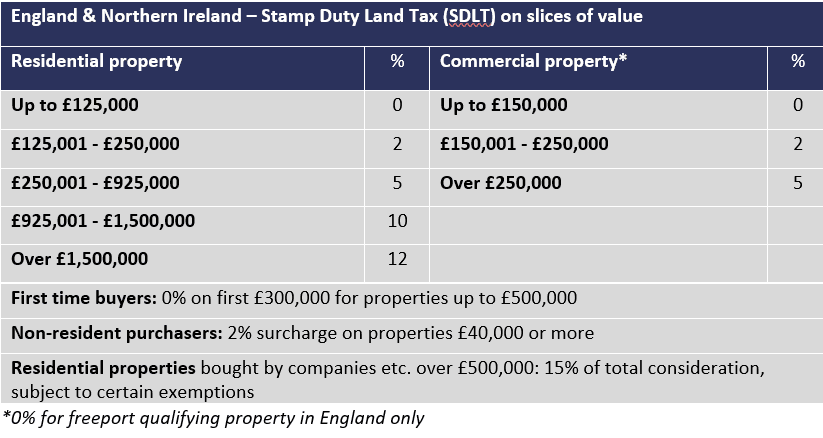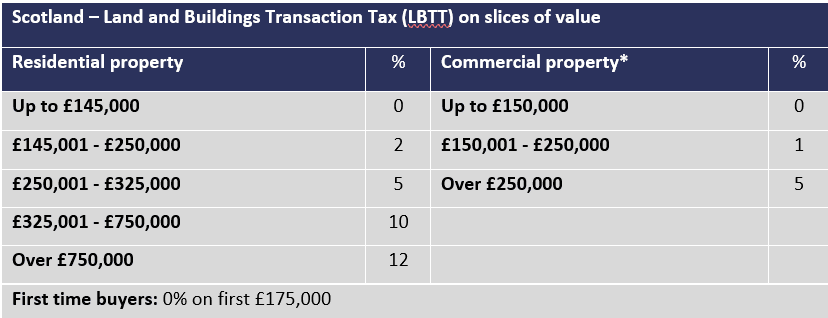In this summary…
Introduction
Just before Christmas, the Chancellor asked the Office for Budget Responsibility (OBR) to produce an economic and fiscal forecast for 23 March. The timing and brief nature of the accompanying Treasury announcement reflected Mr Sunak’s wish to keep the Spring Statement a low-profile event.
This was not meant to be a March mini-Budget, despite what many headlines have suggested. Mr Sunak believes in the once-a-year approach to major tax and spending changes, unlike some of his predecessors. However, in both 2020 and 2021, the pandemic put paid to that aspiration.
2022 has already proved similarly disruptive to his singular Budget plans. Early in February, a little over three months after his Autumn Budget, Mr Sunak was back at the despatch box presenting proposals for £9 billion of spending in the form of council tax rebates and repayable loans to mitigate April’s 54% utility price cap rise. Seven weeks and the Ukrainian invasion later, the Chancellor was once again before Parliament, introducing new measures to cope with soaring energy prices.
Tuesday’s public finance figures suggested the Chancellor had £25-30 billion of wiggle room and, to the surprise of some commentators, he used a good part of it in what looked suspiciously like a mini-Budget, complete with a deferred, rabbit-out-the-hat income tax cut for 2024/25.
Economic Update
Inflation and its headline label, the cost-of-living crisis, have now become the focus of economic attention.
When the Chancellor presented his Autumn Budget on 27 October 2021, the UK economy appeared to be emerging from the pandemic, with the Omicron variant yet to arrive. Back then, the most recent reading for CPI inflation (September 2021) was 3.1%, which the OBR formally projected would peak at 4.4% in 2022. By November 2021, CPI inflation was 5.1%, while the latest reading (for February 2022), released on the day of the Chancellor’s statement, is 6.2%.
Last week the Bank of England upped its inflation forecast once again, pencilling in 8% for April, with the risk of a higher rate still in October if current energy prices are maintained. However, in 2023 the Bank believes inflation will ‘fall back materially’, nearing the official target of 2% on a two-to-three-year horizon.
The OBR is broadly in agreement with the Bank. Its new Economic and Fiscal Outlook (EFO) report sees inflation ending 2022 at 7.4%, but then dropping to 4.0% a year later and to just 1.5% in 2024.
Meanwhile the current rise in inflation has been a two-edged sword for government finances:
The debt and inflation combination was apparent in public sector finance figures published just before the Spring Statement. The Chancellor looks to be undershooting the OBR’s Autumn borrowing forecast for 2021/22 by over £25 billion and that gave him the wiggle room for some larger than expected giveaways.
Announcements
The Chancellor announced several changes, including:
National Insurance Contributions
The primary threshold for Class 1 national insurance contributions (NICs) will increase from £190 a week (£9,880 a year) to £242 a week (£12,570 a year) from 6 July 2022, bringing it in line with the frozen personal allowance.
For company directors, who are subject to special rules, the equivalent annual amount from July will be £11,908. From 2023/24, all employees will share the same £12,570 annual threshold. The maximum potential Class 1 employee NICs saving in 2022/23 is £269.
For the self-employed, the lower profits limit will increase from £9,880 to £11,908 in 2022/23, rising to £12,570 in 2023/24. Class 2 NICs will not be payable if profits are below these limits. The maximum potential Class 4 NICs saving in 2022/23 is £208.
There is no change to the Class 1secondary threshold (employer), but the employment allowance will be raised from £4,000 to £5,000 for 2022/23 onwards.
Fuel Duty
The rate of fuel duty on petrol and diesel is reduced by 5p a litre for 12 months from 6pm on 23 March.
Basic Rate Tax
The basic rate of income tax will be reduced to 19% from 2024/25. The cut will apply to non-savings, non-dividend income for taxpayers in England, Wales and Northern Ireland and also to the savings basic rate, which applies to savings income for taxpayers across the UK.
Scotland sets its own basic rate of tax on non-savings, non-dividend income and will receive corresponding funds under the Barnett formula.
VAT on energy savings
Eligibility for VAT relief on energy saving materials will be expanded and the VAT rate reduced to zero for five years from 1 April 2022. These changes do not apply to Northern Ireland.
Research & Development Tax Credits
From April 2023, all data, cloud computing and pure maths costs associated with research and development (R&D) will qualify for R&D relief.
Green relief for business rates
The Autumn 2021 Budget introduced targeted business rates exemptions from 1 April 2023 until 31 March 2035 for eligible plant and machinery used in onsite renewable energy generation and storage, and a 100% relief for eligible low-carbon heat networks with their own rates bill. The implementation of these measures will now take effect from April 2022.
Tax Plan
The Chancellor announced a ‘Tax Plan’ alongside the Spring Statement, setting a basis for consultation ahead of measures in the Autumn 2022 Budget. The plan echoes themes in Mr Sunak’s recent Mais lecture at the Bayes Business School and focuses on three areas:
Capital The Chancellor wants to reform the tax incentives for investment from April 2023, when the 130% super-deduction will end and the main corporation tax rate is due to rise to 25%.
People In his speech Mr Sunak said that he wanted to ‘consider whether the current tax system, including the operation of the apprenticeship levy, is doing enough to incentivise businesses to invest in the right kinds of training’.
Ideas R&D expenditure in the UK is half the OECD average, but the UK spends more than many other countries on R&D tax relief. The Chancellor plans to reform R&D tax credits, potentially making some R&D expenditure credits more generous.
2022/23 changes (and freezes) already announced
Several tax and other changes (including freezes) will take effect from 6 April 2022. Most of these date back to the two Budgets of 2021. There are further important changes coming down the line.
Income tax: UK
The personal allowance for 2022/23will remain at £12,570 and the basic rate band will similarly be frozen at £37,700 (outside Scotland), making the higher rate threshold (the sum of the two) an unchanged £50,270.
These freezes, which are set to continue until April 2026, in fact represent a real-terms tax increase, given that the Bank of England forecasts that CPI inflation in April will be 8%.
Dividend tax rates will increase by 1.25 percentage points from 2022/23, taking them to between 8.75% (basic) and 39.35% (additional rate). Both the dividend allowance and the personal savings allowance are unchanged.
Income tax: Scotland
In Scotland, a separate set of rates and bands will continue to apply to non-savings, non-dividend income – primarily earnings. The same personal allowance as in the rest of the UK will continue to apply in Scotland.
Scottish taxpayers will still have five tax bands, with the tax rates for 2022/23 ranging from 19% to 46%. The threshold for the higher rate of income tax (at 41%, rather than 40%) will remain unchanged at £43,662, which is £6,608 below the rest of the UK. Someone with earnings of £50,000 a year will have an extra income tax charge of £1,489 a year for being resident north of the border.
Income tax: Wales
The National Assembly for Wales decided not to make any changes from the rates of the rest of the UK (excluding Scotland).
National Insurance Contributions
The secondary threshold for employer’s Class 1 NICs will increase by 3.3%, approximately in line with inflation to September 2021. The upper earnings limit (for employees) and upper profits limit (for the self-employed) will be frozen at £50,270, matching the unchanged UK higher rate income tax threshold outside Scotland.
The Class 2 NIC rate for 2022/23 will be £3.15 per week.
The rates for all contributions under Class 1 (employed) and Class 4 (self-employed) will rise by 1.25 percentage points for 2022/23 only, before dropping back to 2021/22 levels after that. The separate 1.25% Health and Social Security Levy will then take effect from 6 April 2023. Unlike the position with NICs, employees and the self-employed overstate pension age (currently 66) will be subject to the new levy.
Automatic pension enrolment
The contribution levels for workplace pensions operating under the automatic enrolment provisions for 2022/23 will be unchanged:

Pensions – the Lifetime and Annual Allowances
The lifetime allowance, which sets the effective maximum tax-efficient value of pension benefits, will remain at £1,073,100 for 2022/23 and is not due to rise until 2026/27. There is also no increase to the annual allowance, which remains at a maximum of £40,000, subject to the taper and money purchase annual allowance rules.
Company Cars
Company car tax for vehicles registered since 6 April 2020 will rise in 2022/23 for all but the highest emission vehicles.
Older cars will be unaffected, meaning that in 2022/23 the same scale will apply to cars with CO2 emissions measured under both the NEDC and the newer WLTP yardsticks.
The scale charge for purely electric vehicles (EVs) will double to 2%, but EVs remain an attractive option for anyone able to obtain such a vehicle under salary sacrifice arrangements.
Inheritance tax (IHT)
The residence nil rate band and main nil rate band will remain at £175,000 and £325,000. Both are set to stay frozen until 2026/27.
Value Added Tax (VAT)
The reduced 12.5% VAT rate for hospitality, holiday accommodation and attractions will end on 31 March 2022,at which point the rate will revert to the 20% standard rate.
Student finance
In January and February, the government announced new rules for student finance applying to students in England and Wales.
For existing Plan 2 student loan borrowers (those who started a course on or after 1 September 2012) and those starting courses in the 2022/23 academic year, the repayment threshold will be frozen at £27,295 up to and including 2024/25, before increasing annually inline with RPI thereafter.
For new students commencing study from the 2023/24 academic year:
the maximum rate of interest during and after study will be cut to RPI+0%;
the repayment term will be extended from 30 years to 40 years; and
the repayment threshold will be reduced to £25,000 and frozen at that level before increasing annually with RPI from 2027/28.
The mechanism by which the Treasury accounts for these changes will produce an £11.15 billion windfall in 2022/23.
2022/23 tax data
Personal taxation

Income tax rates and bands





Tax Incentivised Investments

Registered Pensions

Property Taxes
Property transaction taxes have different rates and names depending on where in the UK a property purchase takes place.





National Insurance Contributions







Please note
This Spring Budget Statement summary briefing is provided for general consideration only.
The information contained in this briefing is based on Quilter Financial Planning’s understanding of the relevant proposals contained within the Spring Budget Statement 2022 (as of 23/03/22),which may change.
This summary is for general information only. You are recommended to seek professional advice before taking or refraining from taking action on the basis of the contents of this publication.
This briefing represents our understanding of the law, the Spring Budget Statement 2022 and HM Revenue &Customs practice as at 23 March 2022, which are subject to change.





